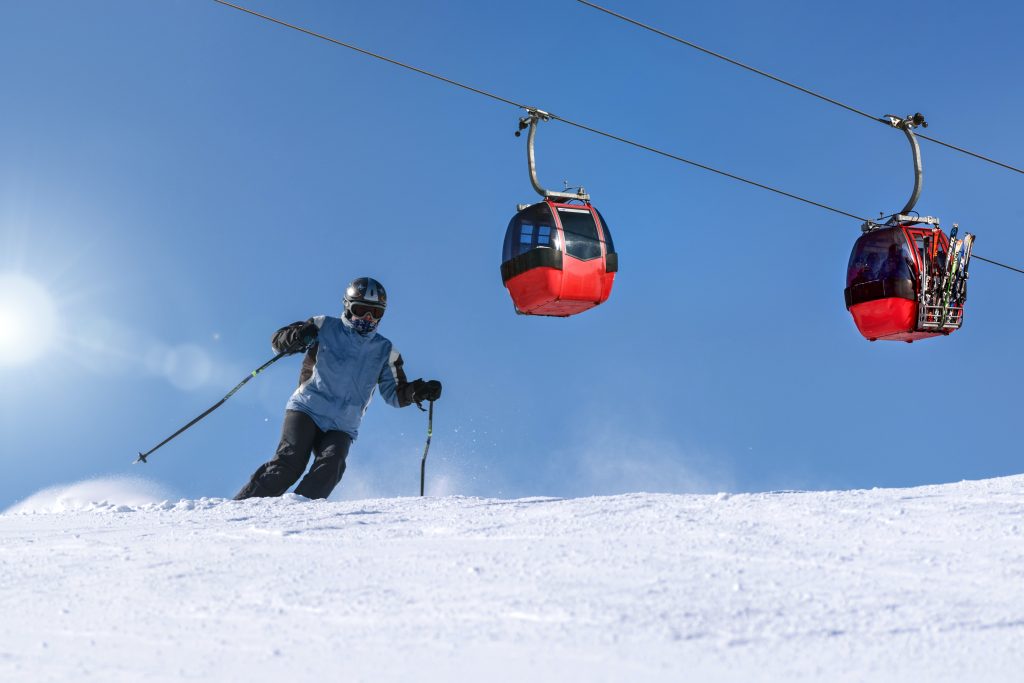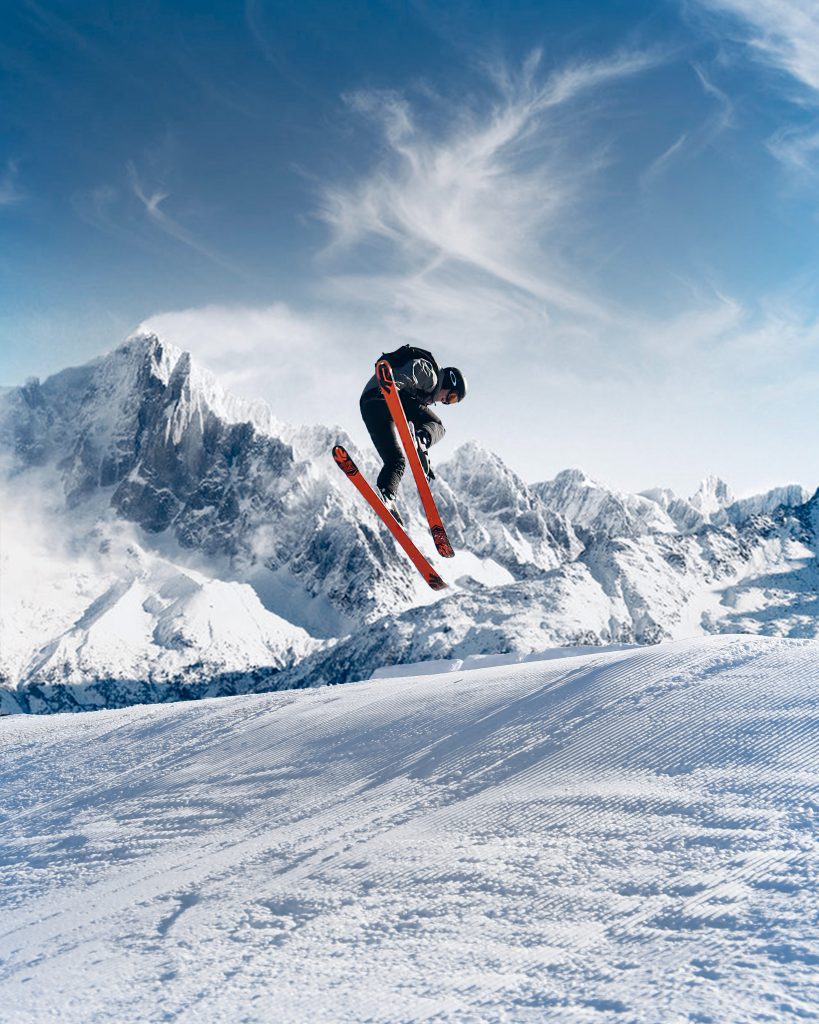Skiing is an exhilarating winter sport that combines speed, skill, and breathtaking scenery. Whether you’re a seasoned pro or a beginner hitting the slopes for the first time, there’s always room to improve and make your skiing experiences truly epic. This guide provides expert tips and advice to help you conquer the slopes like a true champion. From mastering your technique to choosing the right gear and exploring the best ski resorts, get ready to take your skiing adventures to new heights. So grab your skis, buckle up your boots, and prepare for an unforgettable journey through skiing.
-
Get the right equipment.

Having the right equipment can make or break your skiing experience. Check that your ski boots are snug but not too tight and that your skis and poles are the appropriate length and stiffness for your skiing skill level and type.
-
Warm-up

Stretching exercises before skiing can help prevent injury and improve performance. Stretch your legs, hips, and back to warm up your muscles and prepare them to ski.
-
Take lessons
Taking lessons from a qualified instructor can help you improve your technique and take your skiing to the next level, even if you’re an experienced skier. They can also assist you in identifying and correcting bad habits that are holding you back.
-
Practice on groomed slopes
Groomed slopes are ideal for beginners and those honing their skills because they provide a smooth, easier-to-ski surface. They are usually colored to indicate the difficulty level, with green being the easiest, blue next, and black being the most difficult.
-
Use the correct wax

Ski wax is used to improve the performance of skis on snow. There are different types of wax for different temperatures and snow conditions, so picking the right one is critical. You can apply the wax yourself or hire a professional to do it for you.
-
Understand the weather conditions.

The weather can change quickly in the mountains, so checking the forecast before skiing is essential. Dress in layers to adjust to the temperature, and bring extra clothing and equipment such as gloves, hats, and goggles in changing weather conditions.
While Skiing

-
Maintain your body balance.
Maintaining control and preventing falls is critical by keeping your weight centered over your skis and your knees bent. Maintain a quiet upper body while facing downhill, and use your legs to control your speed and direction.
-
Look ahead
Rather than looking down at your skis, looking ahead will help you anticipate turns and obstacles and keep your balance. Keep your head up and your eyes on the road ahead of you.
-
Use your poles

Ski poles can assist you in maintaining balance, initiating turns, and controlling your speed. Maintain your arms in front of you and your poles behind you, and use them to propel yourself forward and sideways as necessary.
-
Control your speed
Turning, edging, and braking are several techniques to control your skiing speed. Use these techniques to keep your speed safe and comfortable for your skill level and the conditions.
-
Beware of your surroundings.
Always be aware of other skiers and snowboarders around you, and follow the “Skier Responsibility Code” to prevent collisions and accidents. This code includes guidelines such as skiing in control, yielding to other skiers, and not stopping in the middle of a trail.
-
Maintain a relaxed body.
It’s easy to tense up while skiing, especially if you’re nervous or feel like you’re losing control. Tensing up, on the other hand, can make you more likely to fall. Instead, try to keep your muscles loose and your body relaxed. Maintain a slight bend in your arms and legs to absorb any bumps or changes in terrain.
-
Learn to turn both ways.
Many skiers have a dominant turning direction (usually to the left or right). But it’s important to be able to turn in both directions to maintain control and avoid collisions with other skiers or obstacles. If you’re not comfortable turning in one direction, practice on a gentle slope until you feel confident.
-
Ski on various terrains
Skiing on different terrains can help you develop your skills and become a more versatile skier. To challenge yourself and improve your technique, practice on groomed runs, moguls, powder, and steeps.
-
Learn how to fall safely.
Even the best skiers fall occasionally. However, knowing how to fall safely can help you avoid serious injury. Keep your arms close and tuck your chin in when you lose your balance. Rather than landing on your head or back, aim to land on your side.
-
Listen to your body
Skiing can be physically demanding, especially skiing all day or on difficult terrain. Pay attention to your body and take breaks when you need to. Don’t push yourself beyond your limits; be aware of signs of fatigue or injury, such as muscle cramps or pain.
-
Have fun
Skiing is a great way to enjoy the outdoors and stay active in winter. Whether you’re a beginner or an expert skier, remember to have fun and enjoy the beautiful scenery and fresh air!
Best Places for Skiing
Below are a few fantastic places you to try Skiing
- Whistler Blackcomb, Canada
- Aspen, Colorado, USA
- Zermatt, Switzerland
- Chamonix, France
- Niseko, Japan
- St. Anton, Austria
- Courchevel, France
- Valle Nevado, Chile
- Queenstown, New Zealand
- Hakuba, Japan
Skiing is a thrilling and popular winter sport that attracts millions of people from all over the world. So, grab your skis, hit the slopes, and enjoy the ride!
Check out more:

